Predictions for Creative Teams in 2023
What trends should modern creative teams know about going into 2023? Here's my prediction on how video content creation will evolve this year.

The 2023 “Consumer Tech Dealmaking” report by Silversmith shows that the Video Content Creation market is growing, but businesses still experience major pain points. When asked what their top complaints are with existing software, businesses said:
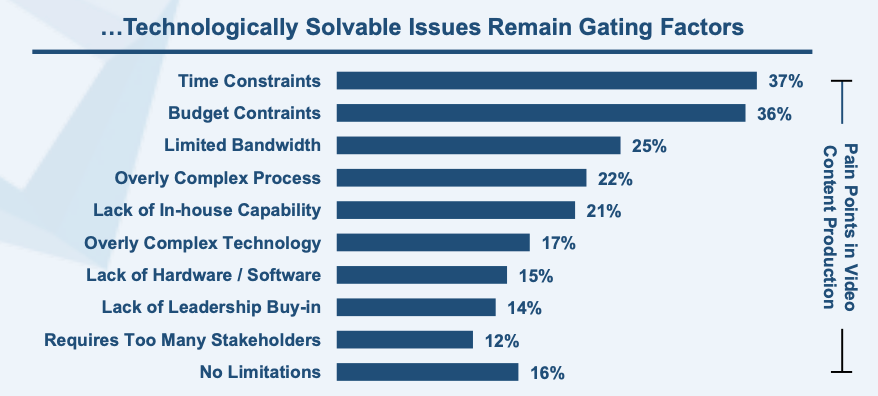
The results cited above don't surprise me as I've used the incumbent video editors – like Adobe Premiere and Final Cut Pro – myself, and they're much more heavyweight than the cloud-first software I'm used to. 5 years ago, in 2018, my cofounder and I experienced these pain points, and the frustration over speed and cost inspired us to build Kapwing, a cloud-based video content studio for modern creative teams.
Now, Kapwing has 36 employees, millions of users, and thousands of professional teams who use our product regularly. I'm the cofounder and CEO. To better understand and serve our customers, we interview marketing and media teams regularly about their pain points, wins, and predictions for the future. We also have an in-house creative team writing articles and making content for our blog, social media, and YouTube channel.
In this article, I wanted to share my predictions for how 2023 will shape Creative Team workflows from my perspective as a business owner, SEO and content marketing enthusiast, and founder focused on empowering creative teams. This article is written for marketing and communications leaders trying to uplevel their team for the new year.
1) Artificial Intelligence
AI-Generated Art: In the second half of 2022, AI-generated art projects enamored the tech and creative industry; images from Lensa AI, Stable Diffusion, DALL-E 2, and other AI models took off on social media. Despite a slow venture cycle, VC deal value for Generative AI companies reached $900M across 63 deals.

In 2023, we expect to see more businesses using AI-generated art to supplement creative workflows. Professionals in video game design, greeting cards and stock photography, journalism, and marketing will benefit from platforms that allow them to generate original art on the fly.
The AI-generated images will become more useable as platforms refine their models and companies find commercial use cases. New jobs will open for professional art generators (”AI-powered artists”), those who know the technology tools well enough to produce custom art with the right styles and feature. Coaches and influencers will teach others how to create art using generators.
ML-Powered Workflows and Automation: Video editing is still surprisingly tedious. Professional producers and editors spend dozens of hours each week cutting out silences, leveling volume, finding shareable clips, resizing for different aspect ratios, blurring out objects, and captioning videos. However, over the last few years, online creative apps have made AI-powered tools more available, saving time and stress for creative teams. A 2022 report by McKensie found that companies were investing in AI adoption for marketing and sales faster than any other businesss unit.
In 2023, this trend will ramp up, and creative software will increasingly leverage machine learning models to suggest helpful edits, visuals, and styles; automate repetitive tasks; and fill in the gaps. At Kapwing, our AI-powered tools like Clean Audio and Smart Cut are among our most popular, and we have more personalized smart experiences for content creators planned in the new year. Our goal is to make Kapwing the leading Smart Video Editor to save creative teams time and money through automation and ML-powered tools.
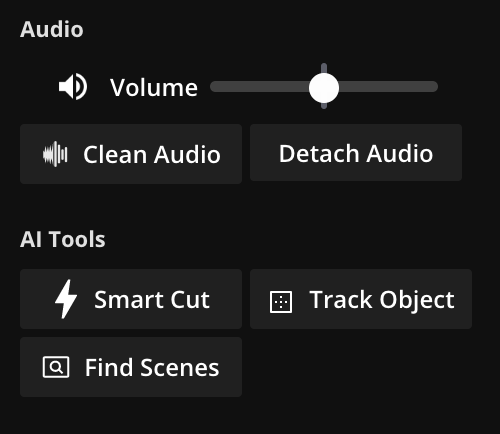
Affordable Video APIs: In 2023, we expect video transcription, computer vision, translation, object tracking, and other APIs to become much cheaper and more accessible. Already, new transcription APIs like Whisper by OpenAI and AssemblyAI are much more accurate and performant than Google’s voice recognition API, and these are just two options in a crowded market.
Meanwhile, Google Search has launched transcription search within videos and editing platforms like Descript and Kapwing have incorporated transcription into editing such that creators do not need to spend hours tediously looking for dialogue clips in their long-form recordings. Journalism, research, sales operations, and education will likely adopt new video editing products and get a productivity boost as new applications incorporate transcription.
2) Cloud & Collaboration
Hybrid work: 2022 proved that hybrid work is here to stay even though the covid-19 pandemic is mostly behind us. In a recent survey, 69% of CEOs said that their company will have some some form of hybrid work going forward. Since moving to “work from home,” office workers have come to expect cloud backups, real-time collaboration, version control, integrations, and fine-grained permissions in their productivity software.
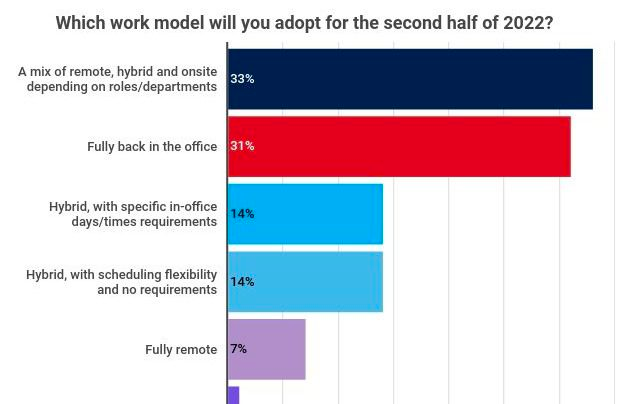
Hybrid work both expands the need for video content and makes it more crucial that video production happens collaboratively in the cloud. 50% of enterprises report that they plan to produce higher quality and more engaging videos to replace certain meetings meaning hybrid work also expands the demand for video content Yet offline desktop software isn’t hybrid-friendly; it's less secure, less compatible across devices, slower and less collaborative for asynchronous teams across timezones.
So, we predict that the cloud is coming for music and video production in 2023. Creative teams will look for video editing solutions that allow everyone to have access to the most recent version of a project from any device, leave in-context comments, and share work in a collaborative digital space. Online video editors will make it easier to share via a URL and work together asynchronously, both requirements for a modern workforce. Startups like Kapwing will take market share from incumbent video editors like Adobe Rush, Sony Vegas, and Final Cut Pro.
Investment in the web and browser: Cloud software has been a trend over the last decade. Word processing, note taking, presentations, spreadsheets, databases, communication, project management, brainstorming, and design have largely moved to browser-based programs like Notion, Google Docs, Airtable, Slack, Asana, Miro, and Figma. In 2022, Adobe acquired Figma and Frame.IO, companies focused on enabling cloud-based creative work, for more than a billion dollars each. These huge acquisitions plus the launch of Adobe Creative Cloud Express and Canva's Design Suite show the creative industry's investment in the web and real-time collaboration.
In 2023, creative teams will come to prefer software they can access in the browser over software that must be installed onto a hard-drive. Old-school software programs like Premiere and iMovie eat memory, heat up your CPU, and slow down other applications. In contrast, websites can offload all compute to cloud processors.

Tech advancements in Chrome, client-side FFMPEG, and web assembly enable developers to more easily support video layers for browser-based video editing. Both of these trends will lead to creative teams adopting powerful online video editing platforms that enable secure storage, collaboration, and editing in one space.
3) Proliferation of Video
Vertical First: In 2022, TikTok, YouTube Shorts, Snapchat, and Instagram Reels all grew in popularity. More companies have leaned in to the vertical video platforms, launching brand content and communications in 9:16. People are consuming more information through vertical video than ever across all platforms, and we don't think that trends is slowing down in 2023.
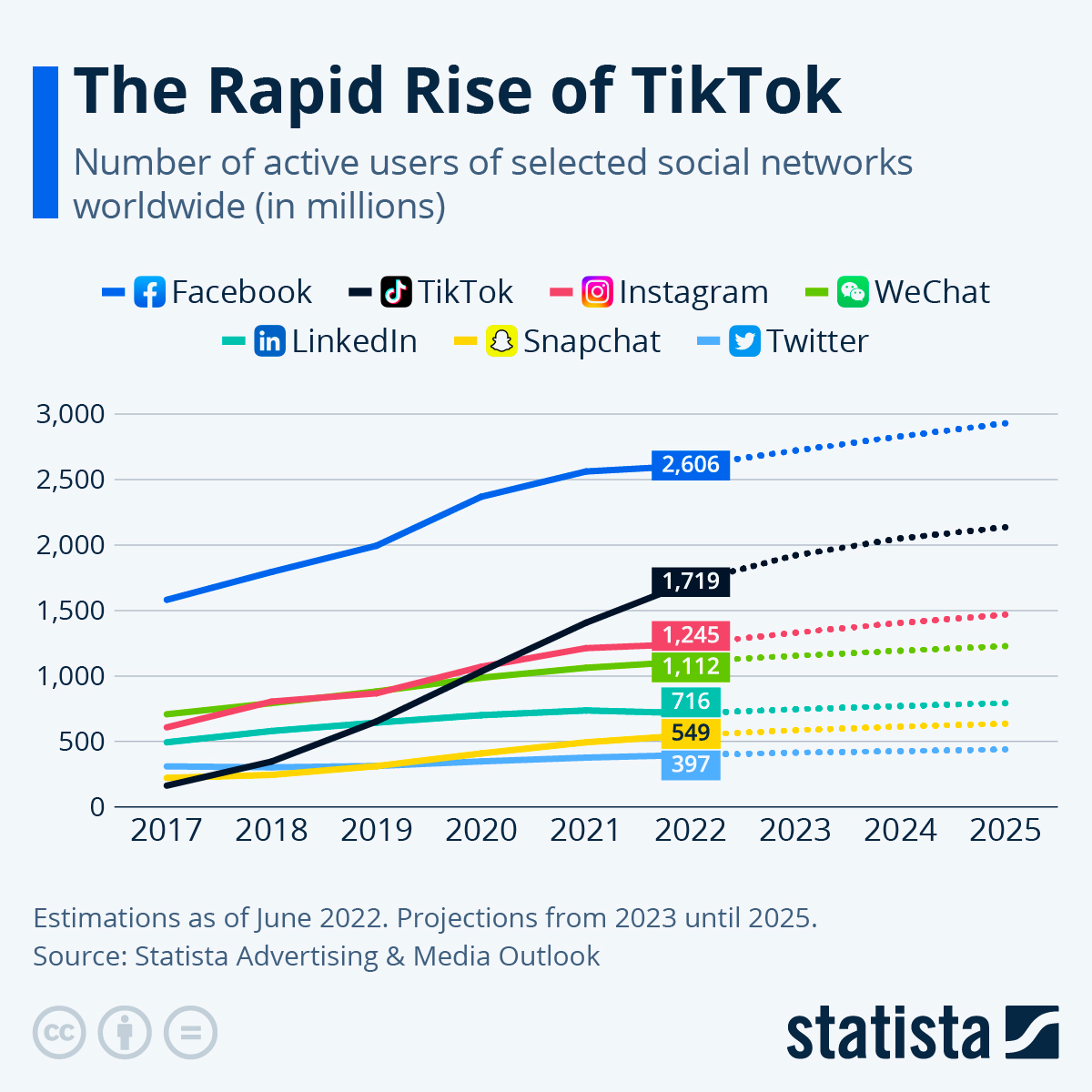
We predict that creative teams will move to a paradigm of vertical-first, making portrait video assets the premiere content type. Consumers should expect to see more videos on YouTube that are repurposed vertical videos rather than the other way around.
Organic growth: In 2020-2022, the influx of venture capital into tech and startups. However, given the recent shift in the stock market and macro-economic trends, more tech companies and startups have shifted investments away from paid and towards organic growth. November ‘22 saw the first dip in advertisment spending since 2020 (source).
In 2023, we expect more companies to move investment from paid advertising to organic growth and partnerships. The result will be a rise content creation: articles, white papers, videos, and graphics. Other issues like DEI may be getting less attention with the macroeconomic shifts.
New platforms: BeReal topped 50 Million installs in 2022, up more than 2200% since the beginning of the year. The app still trails social media giants as recent data reveals that only 9% of worldwide Android users open the app every day (compared to 39% of Instagrammers and 29% of TikTokers). But the traction has caught everyone’s attention; Snapchat, Instagram, and TikTok all launched BeReal knockoffs throughout the year. Some brands, including American Eagle, Logitech, and Chipotle, started posting sneak peaks and branded content on a company BeReal account.
Meanwhile, Elon Musk’s erratic behavior has driven some consumers to seek out Twitter alternatives. Tumblr has made a resurgence recently and has made more bets on video, including a recent Livestream launch. The platform said that they’re excited about “video game sessions, book club discussions and Dungeons & Dragons games.” In 2023, we’re watching BeReal and Tumblr for more launches around video, plus expecting an evolution of new video formats across YouTube, TikTok, Instagram, and Snap.
Video across functions: Office workers across functions are increasingly using video content as part of their day-to-day work. In 2022, we saw video content emerging as an essential medium for political candidates, SMBs, emerging comedians and artists, and customer support teams. And the trend is just beginning. In the Sept 2021 survey “The State of Enterprise Video” by Socialive, 84% of enterprises experienced increased demand for video content in the last year, and 83% expressed strong interest in self-serve video technology to support the creation of new videos.
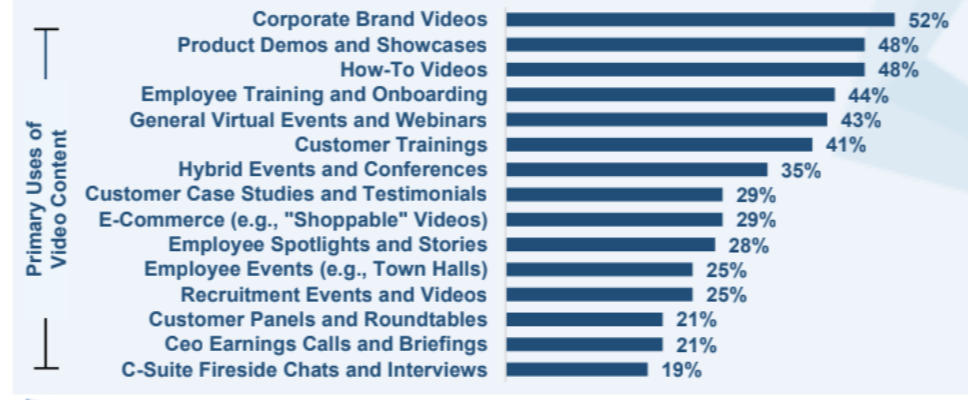
In 2023, more content will move towards video rather than static images, presentations, and graphics. Enterprises report that using video content helps them reach a wider audience (58%), improve workforce engagement (52%), improve their ability to train staff quickly (48%), and enable their company to sell products and services more effectivley (41%). So, we predict that video will become increasingly ubiquitous in new business functions, putting demands on the quantity of video that companies produce. Creative teams should move away from bottlenecking all production work and towards making templates, brand kits, training materials, and approvals processes that ensure quality as more people get involved.
Repurposing and publishing across channels: An October 2022 survey showed that half of marketers are working with more platforms - such as Twitch and Tiktok - than at the beginning of 2022 (source). As a result, social media managers spend a bulk of their time repurposing content for different platforms.
In 2023, we predict that most office workers will become comfortable with trimming, resizing, converting file types, and adding subtitles for videos so that there are more collaborators and fewer bottlenecks. Companies will invest in training their creative teams to edit video and user-friendly solutions that lower the barriers to entry.
Conclusion: Looking Forward
Video has gotten radically more important over the last five years, but the software that creative teams use to create video content is still dominated by incumbents (Adobe Premiere, Da Vinci Resolve, and Final Cut Pro). Video editing has lagged behind other productivity categories because a browser-based video product depends on advancements in cloud infrastructure, image processing, and the web.
But this technology is evolving quickly, and it’s rapidly becoming possible to offer a solution that combines editing, hosting, and commenting in the same digital space even for very large files and complex videos. We’re making iterative improvements every day, and, although it isn’t perfect yet, Kapwing now supports files up to 6GB, real-time collaboration, team billing, and projects with hundreds of video layers. Our product already makes marketing teams and creative agencies more productive. In 2023, we hope to build a product that can serve the top 5% of Youtubers and large-scale media teams.
If you're a marketing or communications team looking for ways to make more, better video content, try out Kapwing for Teams.









